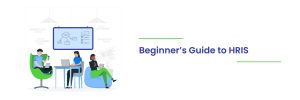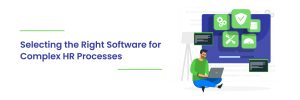What is People Analytics?

Using Data to understand and improve workplaces
People Analytics systematically gathers, analyzes, & interprets data related to employee behavior, performance, and their interactions.
In other words, it’s like HR’s detective tool. It uses data to solve mysteries about employees, like who’s great at their job and why. By collecting and analyzing information, People Analytics helps businesses make smarter decisions, from hiring the right people to improving how everyone works together. It’s all about using numbers to create a happier, more successful workplace.
Why do People Managers need People Analytics?
Sometimes even good managers can make bad people decisions. Without the right information, it’s difficult to make the right call. Good managers are the key drivers of positive employee experience and as organizations are becoming more people focused, the need for a strong decision-making support system is greater than ever.
This is where People Analytics comes into play. When approached correctly, People Analytics take data sitting in multiple systems, process it, and put it directly in the hands of non-technical folks helping managers answer complicated questions that arise daily.


How People Analytics is transforming the HR landscape today
People Analytics is reshaping the way HR works, breathing new life into traditional approaches. The powerful combination between business and people data is a game-changer, transforming how companies bring in, develop, and hold onto talent.
It has further elevated HR from a supporting player to a strategic powerhouse. From hiring to engagement, workforce planning to retention, these tools empower HR professionals to make informed decisions, driving success & cultivating a workplace that thrives on data-driven excellence.
Types of People Analytics
1. Descriptive Analytics – Unveiling the past
Descriptive analytics is the most common type of People Analytics organizations rely on. It serves as the foundation of People Analytics, providing insights into historical data to comprehend past trends & occurrences. By analyzing data related to employee demographics, tenure, performance, and engagement, organizations can gain a comprehensive understanding of their workforce dynamics. Descriptive analytics answers fundamental questions such as “What happened?” and “Why did it happen?” This information empowers HR professionals and leaders to identify patterns and correlations, helping them make informed decisions based on historical context.
For example, a company might use descriptive analytics to identify turnover patterns, allowing them to pinpoint departments or roles with higher attrition rates. This knowledge can guide targeted retention strategies and inform talent acquisition efforts.


2. Diagnostic Analytics - Unraveling the Why
Building upon descriptive analytics, diagnostic analytics dives deeper into the “why” behind workforce trends and events. This type of analysis seeks to identify the root causes of specific outcomes by examining underlying factors and relationships within the data. Diagnostic analytics aims to answer questions like “Why did turnover increase in a particular department?” or “What factors contributed to the decline in employee engagement?”
HR teams can use diagnostic analytics to conduct thorough investigations, uncovering insights that might not be immediately visible from descriptive data alone. By understanding causative factors, organizations can implement targeted interventions & strategies to address challenges & optimize workforce performance.
3. Predictive Analytics - Forecasting the Future
Predictive analytics takes People Analytics a step further by leveraging historical data and statistical models to predict future workforce trends and outcomes. By analyzing variables such as performance metrics, employee behaviors, and external factors, organizations can anticipate potential developments and make proactive decisions. Predictive analytics helps HR leaders address issues before they escalate and capitalize on emerging opportunities.
For example, predictive analytics could forecast high-potential employees at risk of leaving the company, allowing HR to intervene with retention initiatives. Similarly, it could help project future talent needs based on business growth, ensuring a well-prepared Workforce.


4. Prescriptive Analytics - Guiding Strategic Actions
The pinnacle of People Analytics, prescriptive analytics, not only predicts future scenarios but also recommends the best courses of action. By combining predictive models with organizational goals and constraints, prescriptive analytics provides actionable insights that guide strategic decision-making. This type of analysis answers the question “What should we do?” by suggesting tailored interventions to achieve desired outcomes.
For example, predictive analytics could forecast high-potential employees at risk of leaving the company, allowing HR to intervene with retention initiatives. Similarly, it could help project future talent needs based on business growth, ensuring a well-prepared workforce.
Let's explore how PayrollPlus leverages these insights in different areas
People Analytics is reshaping the way HR works, breathing new life into traditional approaches. The powerful combination between business and people data is a game-changer, transforming how companies bring in, develop, and hold onto talent.
It has further elevated HR from a supporting player to a strategic powerhouse. From hiring to engagement, workforce planning to retention, these tools empower HR professionals to make informed decisions, driving success & cultivating a workplace that thrives on data-driven excellence.

Descriptive Insights:
PayrollPlus Absence Management features dual dashboards for both employees and managers.
Imagine each employee having their own Self-Dashboard. It displays their remaining leave days, including vacation and other time off. When leave is requested, the dashboard even counts down to the day.
Diagnostic Insights:
The Leave Apply Heat Maps show patterns. Leave Apply Heat Maps are colourful charts that shows when employees take time off from work. It uses different colors to reveal patterns. This map helps companies understand when people prefer to be away, helping in better workforce planning.


Prescriptive Insights:
Managers benefit from the Supervisor Dashboard, seeing who’s working & who’s not. The Lost Time Average shows how much work time is lost when employees take unplanned leaves, while the Bradford Factor helps understand how employee absences impact the team. Clicking on an employee’s name reveals more insights, enabling Prescriptive Insights for better management.
Performance Analytics
Descriptive Insights:
Team Assessments offer insights into goals and competency ratings, while Competency View and Competency Comparison add depth, providing Descriptive Insights.


Diagnostic Insights:
Subordinate Assessment Summary gives managers a quick and organized overview of how their team members are doing in their performance evaluations, keeping them informed about appraisals, helping in identifying gaps and training needs, offering Diagnostic Insights.
Prescriptive Insights:
Performance Analytics highlights trends in top-performing units over five years, allowing Predictive Insights into shifts in skill profiles and movements.

HR Operational Efficiency

Prescriptive Insights:
Administrative Analytics helps craft custom dashboards for efficient administration, offering Prescriptive Insights for data-driven decisions.

Diagnostic Insights:
Unplanned leave patterns & exit interview insights help diagnose turnover concerns.

Predictive Insights:
Recruitment effectiveness & training efficacy measurements provide Predictive Insights for future HR strategies.
Top 5 Benefits of People Analytics
Research suggests that organizations that excel at People Analytics are 3.1 times more likely to outperform their peers. ”
Let’s read through a few benefits of integrating People Analytics into your business strategy.
1.Employee Retention: Keeping your best & brightest
People Analytics excels at tackling turnover. By analyzing employee data, it unveils insights that guide effective strategies for retaining top-tier talent. This means understanding what motivates and engages your star performers, leading to customized approaches. The outcome? Increased employee satisfaction, reduced turnover, & a more stable workforce. With People Analytics as your ally, you’ll be equipped to create an environment where your best employees thrive and choose to stay, contributing to the long-term success of your organization.
2. Talent Acquisition: Spotting the right fit
In the past, HR often relied on gut feelings & limited data to make hiring decisions. But data and analytics now allow recruiters to pinpoint the exact qualities that make a candidate successful. By analyzing past hiring data, they can identify patterns that correlate with high performance. For example, a retail company found that candidates with prior customer service experience coupled with a positive online presence tend to excel in their front-line roles. With this knowledge, HR departments can now proactively seek out these traits, increasing the likelihood of a successful hire.
3. Performance Management: Power up performance
Performance management used to rely on reviews & numbers, missing the broader employee growth perspective. People Analytics introduces a fresh approach, transforming performance management into an ongoing journey powered by data and insights. This evolution offers real-time feedback, a comprehensive view of behavior & productivity, & data-driven decision-making. It aligns personal goals with organizational objectives, fosters continuous feedback, identifies high performers based on facts, tailors growth opportunities, pinpoints potential leaders, and anticipates performance trends using historical data and
predictions, revitalizing the way performance is managed and nurtured.
4. Employee Happiness & Wellness: A happier workforce
People Analytics picks up real-time emotions from employee feedback and communications helping you address concerns quickly. By tracking how employees engage with wellness programs, you can measure their impact. Engagement survey data shows what boosts or hampers engagement, giving you insights to boost motivation and dedication. It even forecasts future engagement levels and well-being based on past data, helping you avoid potential issues. Moreover, it sheds light on diversity and inclusion efforts, highlighting progress and areas for growth, promoting a more harmonious environment.
5. Workforce Planning: Future ready teams
Team management resembles fitting puzzle pieces perfectly. People Analytics employs historical data to forecast busy periods, making sure there’s adequate staffing. It pinpoints skills gaps, simplifying training choices. No more hiring guesswork; Analytics evaluates candidates, saving time, calculating turnover probabilities, and aiding contingency plans. Daily scheduling becomes effortless; People Analytics optimizes task allocation via productivity analysis. Amid constant change, it acts as a compass, adapting strategies based on market trends and employee performance, keeping teams prepared for what’s ahead.
The Future of People Analytics
Moving ahead, the world of People Analytics is getting bigger blending tech and human insights to reshape HR practices. Advanced algorithms and technology are set to bring about significant changes.
Picture this: we’ll predict things before they happen. People Analytics will help us plan smarter, improving employee well-being and performance. It’ll also ensure fairness and equal opportunities for everyone.
Real-time insights will be at our fingertips, revealing workforce availability and trends. Dynamic charts and tools will provide valuable insights into how our company operates.
But it’s not just about technology. People Analytics will handle data responsibly and respect privacy.
In the future, People Analytics will be our strategic ally, steering our company towards success. It’s an exciting journey filled with possibilities, enhancing our work, fostering growth, and boosting overall satisfaction.
HR Operational Efficiency
Conquering HR obstacles and challenges
Embracing this journey requires determination. It’s about confronting head-on the obstacles that People Analytics brings. From understanding intricate data to navigating uncharted analytical territory, these challenges can be overcome. They invite us to expand our capabilities, refine strategies, & ultimately reshape workplaces.


Addressing Data Privacy and Ethical Concerns
Among the crucial challenges is the balance between insights & individual privacy. Tackling data privacy and ethical concerns goes beyond compliance; it’s an ethical imperative. Navigating through this landscape requires meticulous care, making sure People Analytics is utilized responsibly, and maintaining each employee’s privacy.
Integrating People Analytics into HR processes
Seamlessly infusing People Analytics into HR processes poses another challenge. Yet, it’s a puzzle worth solving. The blend of technology and HR practices has the potential to revolutionize workforce understanding, engagement, and empowerment. It’s about harmonizing innovation with tradition, integrating analytics as an essential element of HR’s foundation.

Tips for successful People Analytics implementation
Navigating these challenges demands a roadmap. Here are some guiding principles as to how one can do this:
- Start with a clear vision and strategy. Ensure data accuracy and reliability – the cornerstone of insightful analytics.
- Foster a culture of data literacy across the organization.
- Collaborate across functions, recognizing that People Analytics is a multidisciplinary effort.
- Measure success not merely by numbers, but by the positive impact on employees and the organization.
With People Analytics, challenges are real. But so is the potential for transformation. By mastering these challenges, we unleash the full power of data-driven HR practices, shaping workplaces that are not just efficient, but empathetic; not just productive, but genuinely empowered.
5 Reasons Why Every Company Should Have a People Analytics Strategy in 2023
Below are the top five compelling reasons why adopting a People Analytics approach is no longer a choice, but a strategic need for businesses today.
1. Informed Decision-Making for Businesses:
In an era driven by data, making decisions without insights is a shot in the dark. People Analytics provides vital information about trends, performance metrics, & engagement levels helping company leaders make informed decisions that optimize productivity, improve job satisfaction & foster overall organizational growth.


2. Elevating Employee Engagement to new heights:
Employee engagement stands at the heart of a thriving business. Identify factors driving engagement or disengagement allowing companies to tailor their strategies. By acknowledging
achievements, addressing concerns, and fostering a supportive environment, organizations can cultivate a motivated and engaged workforce that drives success.
3. Transforming Talent Management:
In the race for exceptional talent, attracting and retaining the best professionals is a constant challenge. People Analytics provides a competitive edge by evaluating recruitment strategies,
predicting turnover risks, and spotting high-potential individuals for growth opportunities.


4. Driving Diversity, Equity, and Inclusion (DEI):
Diversity, equity, and inclusion are no longer aspirations; they are business imperatives. By quantifying representation and tracking progress, organizations create a culture of inclusivity.
5. Navigating Agile Work Dynamics:
Work dynamics are in flux, with hybrid models and evolving expectations becoming the norm. By analyzing employee preferences & performance, organizations can tailor policies that cater to both employee well-being & business objectives, ensuring a balance.
The adoption of a People Analytics strategy in 2023 is no longer a luxury, but an essential strategy. The power of People Analytics pushes companies toward a future where their people flourish and drive unparalleled success.

How PeoplesHR's People Analytics is helping businesses
Designed to streamline HR operations, PeopleHR offers a complete suite of features to manage employees efficiently. Among this all-in-one Human Capital Management (HCM) platform’s robust offerings, Reporting and Analytics seamlessly linked with People Analytics is a core strength. It empowers HR leaders to unlock insights, decode trends, and make informed decisions that shape an organization’s success.
Empowers both employees and supervisors with data-driven insights, facilitating smarter Leave Management strategies and a more engaged and productive workforce with :
- Employee Self-Dashboard
- Leave comparison and planning
- Leave statistics for self-improvement
- Supervisor Dashboard for informed leadership and more
Transforms Performance Management, offering comprehensive insights to employees & supervisors. It improves decision-making, cultivates individual growth, & pushes teams towards greater engagement and productivity.
- Team Assessments
- Compare team members
- Goal Distribution
- Competency Mapping
- Training and Development and more
Transforms Performance Management, offering comprehensive insights to employees & supervisors. It improves decision-making, cultivates individual growth, & pushes teams towards greater engagement and productivity.
- Team Assessments
- Compare team members
- Goal Distribution
- Competency Mapping
- Training and Development and more
Transforms Employee Happiness & Wellbeing, revolutionizing the way organizations nurture a thriving workforce.
- Wellness Dashboard
- Individual happiness insights
- Surveys and more
PayrollPlus interactive Administrative Analytics supplements People Analytics, giving a comprehensive overview of key performance indicators, elevating HR administration to new Heights.
- Customized dashboards
- DEI insights
- Operational overview and more
PayrollPlus Analytics Making HR Awesome with Data-driven Insights.




